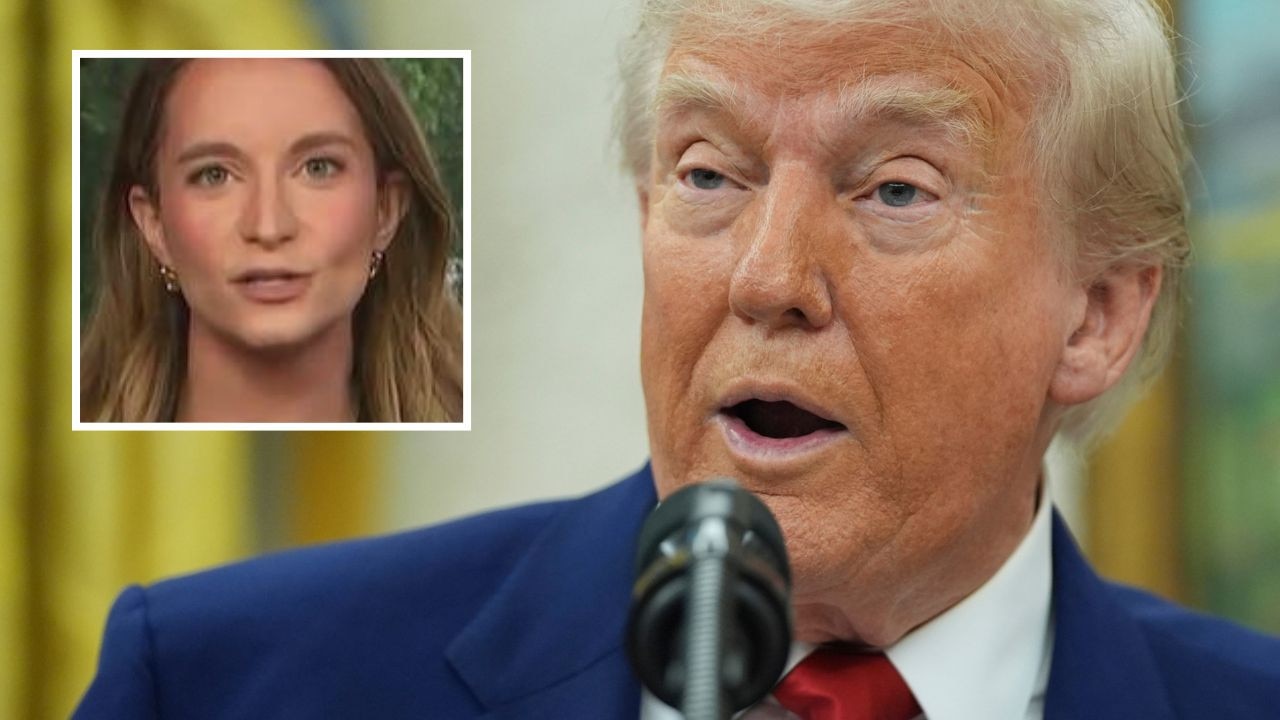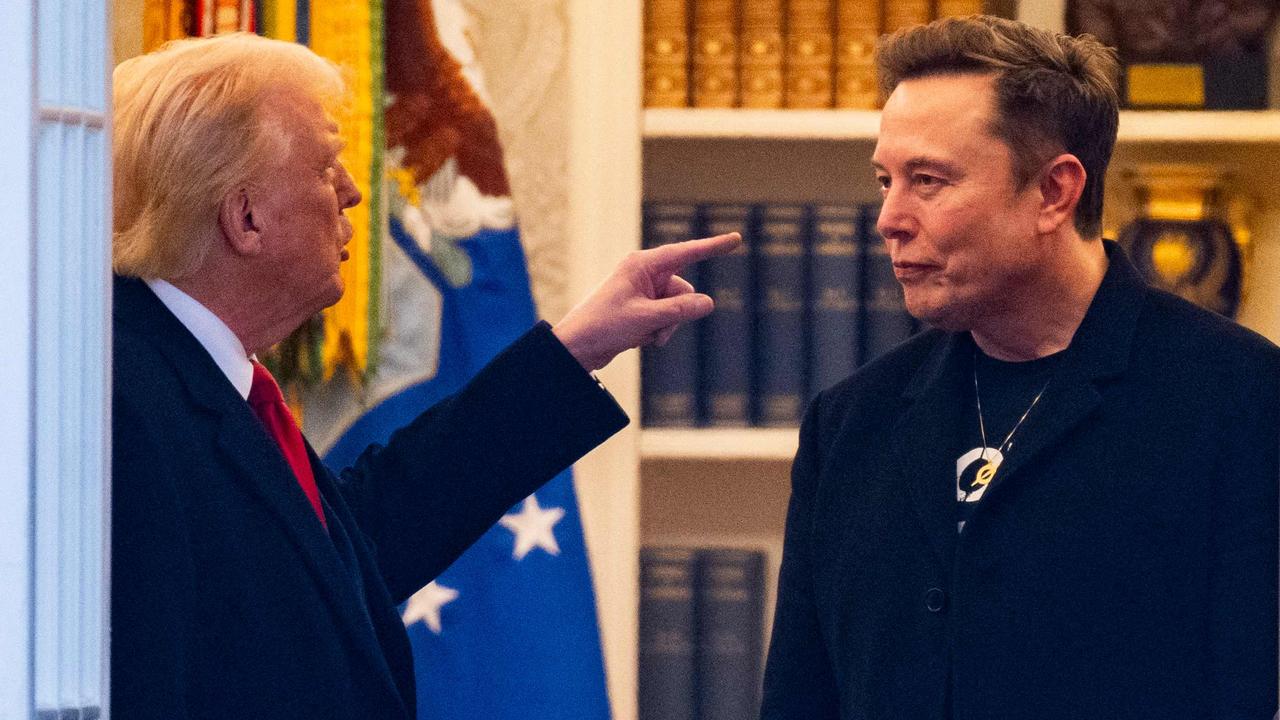Mexican drug lord Joaquin ‘El Chapo’ Guzman escapes jail, on the run from officials
HE IS one of the world’s most notorious druglords, and now he’s on the run after a daring escape from jail. There’s reason for us to be worried.
THE world’s most infamous drug lord escaped from jail in much the same way he built his empire — with tunnels.
Joaquin Guzman’s daring dash for freedom from a Mexican supermax prison on Saturday will likely see him restored as the active head honcho of the Sinaloa Cartel, one of the world’s most powerful drug-trafficking operations, and one with increasing influence in Australia.
Guzman’s cartel is already believed be supplying significant hauls of cocaine across the Pacific Ocean to Australia, and setting up local operations in our capital cities.
The Sinaloa Cartel has also just clinched the number one spot for heroin supply in New York and controls about 100 sophisticated tunnels used for smuggling drugs from Mexico to the US — a drug-pedalling method Guzman is believed to have pioneered.
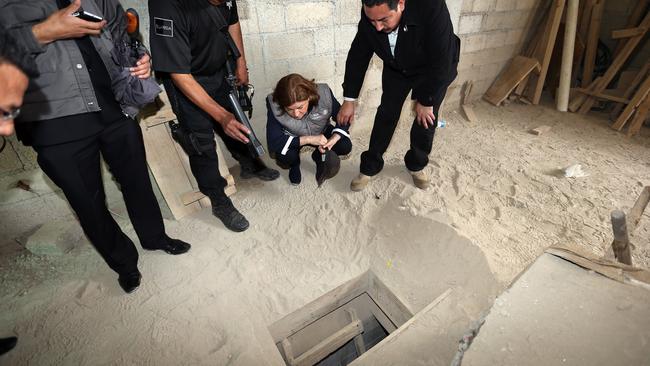
When he was arrested last year, US prosecutors argued Guzman, who had already escaped prison before, should be extradited.
But a former Mexican attorney general said the kingpin should be prosecuted at home as a matter of national sovereignty, and the US could have him in “about 300 or 400 years”, after he’d served time for his crimes in Mexico.
What happened next proved a huge embarrassment to a country already overcome by a bloody drug war.
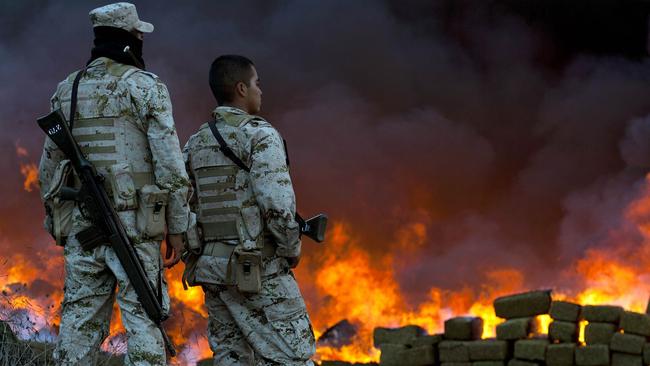
GUZMAN’S GREAT ESCAPE
Guzman, who is believed to be 58, waited until he had received his daily dose of medication at 8pm on Saturday before making his escape from the Altiplano jail, one of Mexico’s most secure prisons.
He reportedly slipped out of his cell through a rectangular passage in his shower area, climbing down a 10 metre ladder into an illuminated tunnel.
The tunnel runs about 1.5 kilometres underneath cornfields and corn pastures in Mexico’s Almoloya de Juarez region, about 90km west of Mexico City. It was high enough for Guzman — whose nickname, El Chapo (Shorty) refers to his diminutive, 167cm stature — to stand up straight.
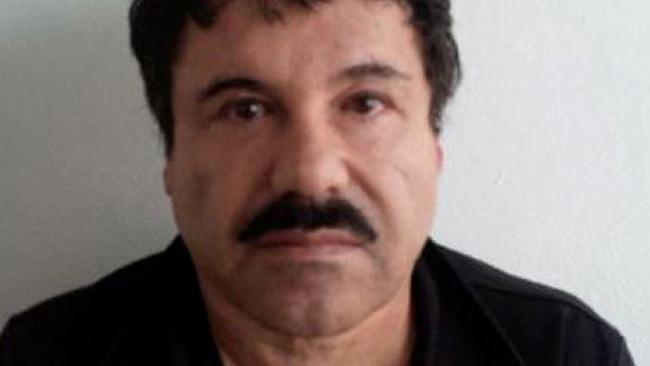
The ventilated tunnel was equipped with a motorcycle-on-rails system that whisked Guzman to a small cinder-block house, from which he is believed to have emerged to freedom.
The escape has sparked a desperate manhunt. Altiplano jail was put under lockdown and flights were grounded at nearby Toluca airport.
Many people believe construction on a water-pipeline project near the jail allowed Guzman’s men to build his escape tunnel without being noticed, the Washington Post reported. It has also been suggested the well-planned escape operation was carried out with complicity from prison officials.
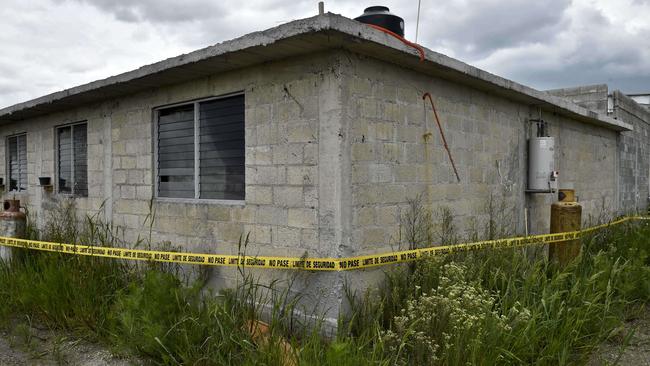
Thirty workers at the jail have been taken in for questioning.
“This is something that had been cooking for months,” security expert and former government intelligence officer Alejandro Hope said. “It shows the weakness of the entire chain of [Mexico’s] judicial system.”
The escape has led to reactions of dismay in the US.
“I think this will add to the distrust many US agencies feel [toward the Mexican government] — even if that’s not publicly voiced,” David Shirk, a fellow for the Woodrow Wilson International Center for Scholars, said, according to the Los Angeles Times
Republican presidential hopeful Donald Trump has jumped on Guzman’s dramatic escape to add to his recent criticism of Mexico and Mexican immigrants in the US.
Mexico's biggest drug lord escapes from jail. Unbelievable corruption and USA is paying the price. I told you so!
— Donald J. Trump (@realDonaldTrump) July 12, 2015Social media has reacted with humour, with many users joking Guzman escaped to go after the outspoken billionaire.
Guzman faces multiple federal drug trafficking charges in the US, as well as in Mexico.
But this isn’t the first time he has escaped from jail.
He did first achieved the feat in 2001, when he famously hid in a laundry cart to flee Puente Grande, a maximum-security prison in the Mexican state of Jalisco. He remained a fugitive until he was arrested again in February last year.
The Chicago Crime Commission said Guzman’s latest escape means he is, once again, Public Enemy number 1 in Chicago. The last person to hold that title was Prohibition-era gangster Al Capone.
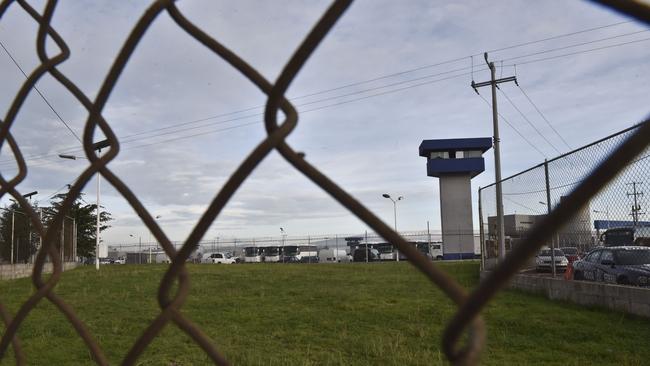
INSIDE THE SINALOA CARTEL
If Guzman is not captured immediately, he will be back in full command and control of the Sinaloa cartel, retired US Drug Enforcement Administration official Michael S Vigil has warned.
“Within 48 hours, Chapo [Guzman] will re-assume control of the Sinaloa cartel, which means more violence for Mexico and more drugs to the US,” he told the Washington Post.
“All the accolades that Mexico has received in their counterdrug efforts will be erased by this one event.
“It will be very difficult to capture Chapo if he is able to make it into the rugged Sierra Madre mountains of Sinaloa, where he was born and raised. He is revered and protected by the local population since he builds schools, churches and gives money to the poor.”

Guzman has been ranked by Forbes magazine as one of the most powerful people in the world every year since 2009, and in 2012 Forbes estimated his worth at $1USbillion ($AU1.3billion).
The Sinaloa Cartel, which he founded in 1989, is considered by the US Justice Department as “one of the world’s most prolific, violent and powerful drug cartels”.
With profits estimated at around $3USbillion ($AU5.4billion) the Sinaloa Cartel imports cocaine, methamphetamine, marijuana, heroin and other drugs and precursor chemicals into Mexico from various countries in Asia and Central and South America.
Large hauls of the drugs — with a much higher price tag — are then smuggled across the US-Mexico border via cars and trucks, fishing vessels and sophisticated tunnels, mostly into San Diego. Private planes, cargo aircraft and even submarines are some of the other ways it moves drugs by air and sea, with its tentacles reaching as far as Europe and Australia.
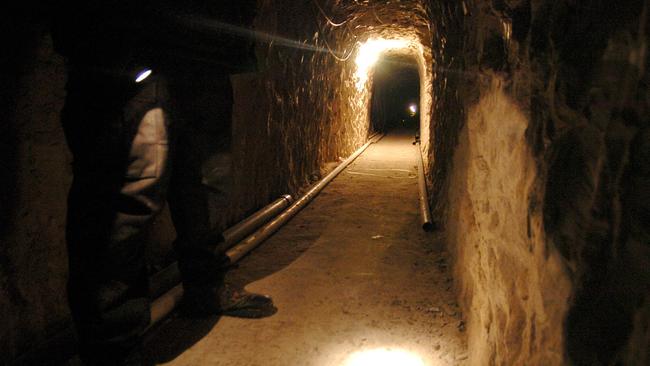
The Sinaloa Cartel has also been one of the major players in Mexico’s brutal drug wars, which have killed about 100,000 people.
Its major rivals include the Gulf Cartel, which it battled against for control of the coveted southwest Texas corridor in 2005, and Juárez Cartel, which it fought in a long and bloody battle for control over drug trafficking routes in and around the northern Mexican city of Ciudad Juárez, resulting between 5000 to 12,000 deaths.
Reports emerged in 2010 that the Sinaloa Cartel had infiltrated and corrupted the Mexican government and military, largely with bribery. It has also been accused of colluding with the government to destroy rivals cartels and protect Guzman. Mexican officials deny this.
Perhaps even more sensationally, an investigation last year by Mexican newspaper El Universal found that between 2000 and 2012, the US government had an agreement with the Sinaloa Cartel that allowed the organisation to smuggle billions of dollars of drugs in exchange for information on rival cartels.
WHAT’S THE LINK WITH AUSTRALIA?
Violent Mexican cartels like Sinaloa are making frightening new inroads into the illicit drug trade in Australia — and this is largely because they perceive us as a goldmine.
Mexican cartels are able to get much higher prices for drugs in Australia than in Mexico or the US, Australian Crime Commission chief executive Chris Dawson said in September.
In Australian dollars, the typical wholesale price per kilogram of cocaine in Colombia is $2,500. In Mexico it is $13,500 per kilogram, and in the US $35,000.
But if the same cocaine makes its way into Australia, it is worth a staggering $250,000 per kilogram.
Mr Dawson said the profits of Mexican drug cartels alone rivalled the gross domestic product of many small nations.
“The Australian Crime Commission is concerned about the types of serious and organised crime groups targeting Australia, in particular Mexican organised crime groups,” he said.
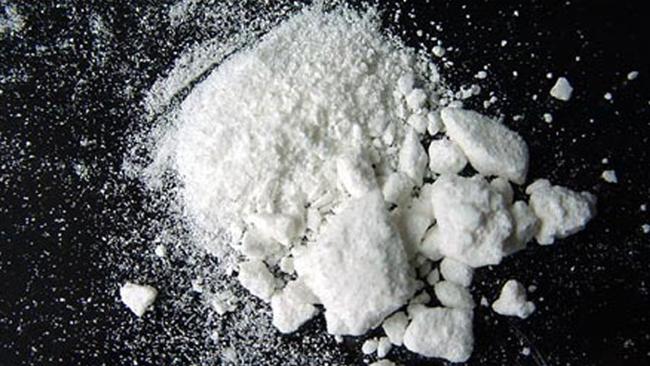
“You only need to look to the violence on the streets in Mexico and the thousands of people who have died at the hands of Mexican drug cartels to realise how dangerous these groups are, and they are now looking at Australia as a destination to facilitate their crime.”
He also said Mexican serious and organised crime groups have links to outlaw motorcycle gangs and other organised crime groups in Australia.
But it doesn’t end with cocaine. Last month, a United Nations report warned Mexican drug cartels were targeting criminals in Australia to import ice into the country.
In July last year, the Australian Crime Commission was involved in the arrest of two men allegedly linked to a Mexican drug cartel in Sydney’s Neutral Bay. Officers seized about 30kg of a substance believed to be crystal methamphetamine, firearms and about $2 million suspected to be proceeds of crime.
The Sinaloa Cartel is understood have had operatives working in Australia for years and been working to expand its Australian networks.

Members of other rival Mexican cartels are also believed to be moving in, forming “crime co-operatives” with local bikie gangs.
Australian Customs boss Roman Quaedvlieg said the Mexicans drug gangs were looking at Australia as a retail market.
“They are looking for locally based organised crime gangs, and we all know OMCGs (outlaw motorcycle gangs) are prolifically criminal and they are involved in all sorts of enterprises in terms of criminality,” he said.
According to a Fairfax report in 2010, the cartel supplied more than half of the cocaine used on Australia’s east coast since 2008, at a rate of about 500kg a month.
The cartel was also believed to be behind a 240kg shipment, worth about $83 million, which was intercepted in June 2010 in what was then Australia’s fifth-largest drug bust.


